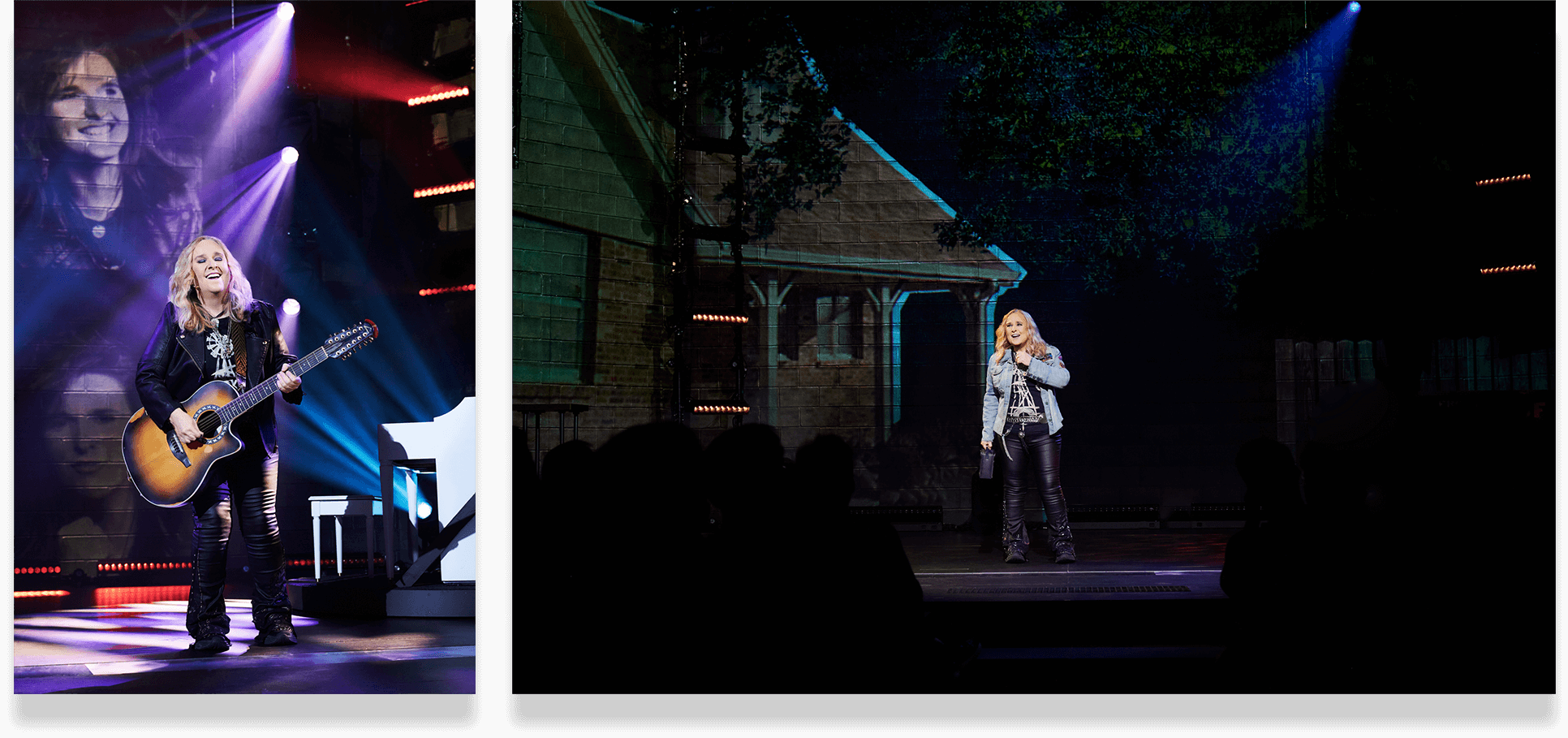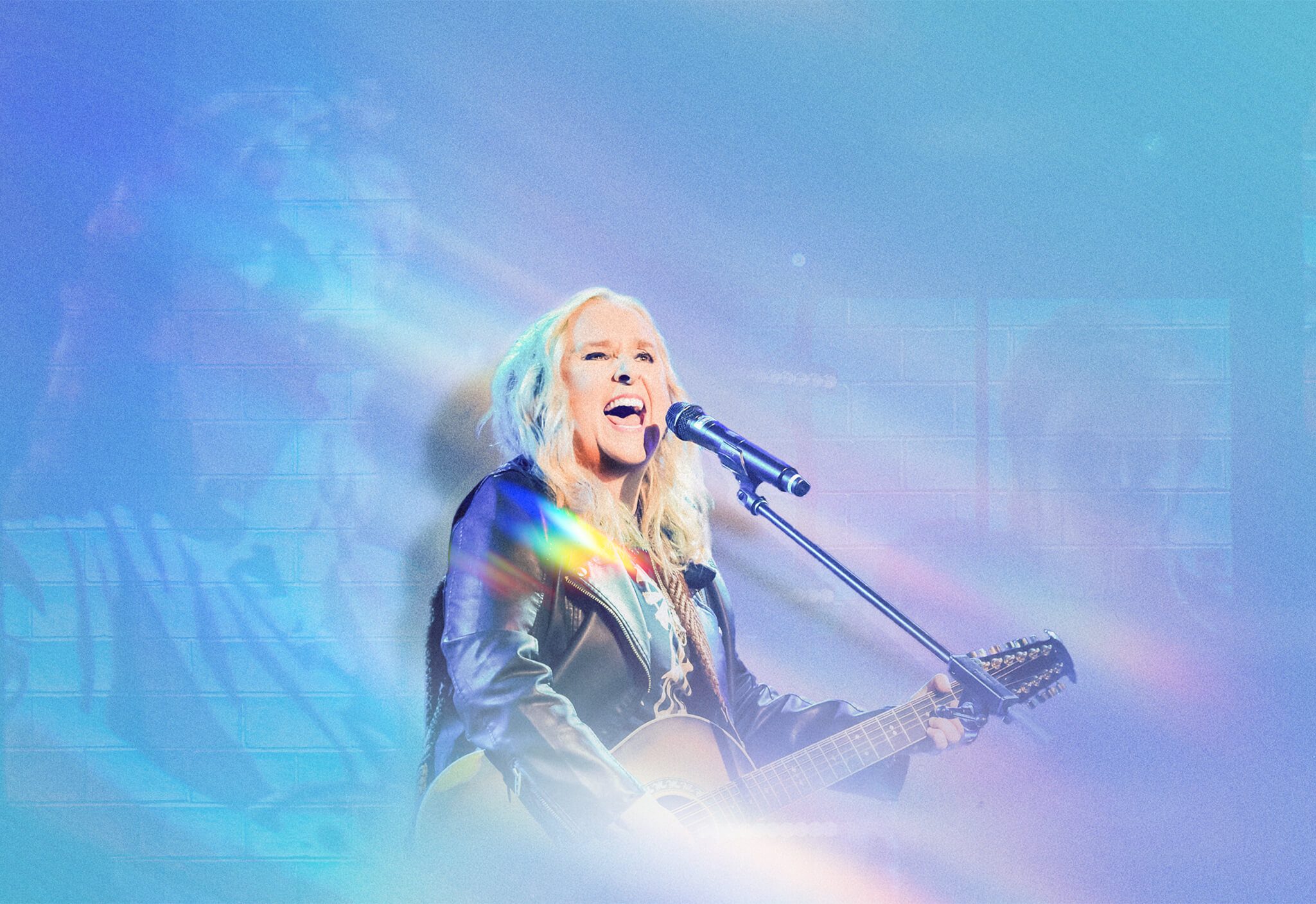Type ‘Melissa Etheridge’ into the search box of the Curve Archive and you get a retrieval of 177 pages and more than half a dozen covers.
From the days of Deneuve through to the last days of publishing Curve as a newsstand magazine, Melissa Etheridge was always a firm favorite with us. And not in an L Word kind of way (the only other cultural phenomenon to receive a comparative amount of coverage). Rather, it was because Etheridge came out before many of her contemporaries, and was nakedly honest in her career and personal life.
This year, Etheridge has reminded us of her longevity and worth as a music and lesbian icon with a trilogy of achievements: A new album, a Broadway show, and a memoir.
At 62 she is still rocking and if you are lucky enough to see her Broadway show, Melissa Etheridge: My Window at Circle in the Square theater in New York City (running until November 30), you will be privileged to witness her trademark charisma and artistry up close and personal. Etheridge charms audiences with her unbeatable guitar playing and her signature raspy vocals, but what may be new for some is her candor as she tells the story of her life, punctuated by 23 songs — a few surprises including a song she wrote when she was 11 years old. From humble beginnings in Leavenworth, Kansas, coming out to herself, her father, and her community, shrugging off her mother and sister’s rejection, and finding fame in California to love, loss, and tragedy.

Written by Etheridge with wife and Nurse Jackie co-creator Linda Wallem Etheridge, and directed by Amy Tinkham, My Window takes us on a journey through much of the biographical information Curve readers may have gleaned from the pages of our magazine. Etheridge doesn’t name the people in her life who have come and gone and who are summoned dramaturgically as archetypes — “Movie Star’s Wife” (Julie Cypher, married to Lou Diamond Phillips when they met); or “Girl From Indiana” (Tammy Lynn Michaels). Rather than naming names, the focus is on what the relationships were at the time — and that is: completely new in the cultural zeitgeist. I cannot think of another high-profile lesbian who was making families like Etheridge was, in the full glare of the tabloids and America’s ongoing culture wars which were driven by Right-wing agendas (they still are). When it came to being an out partner and mom, or an activist, Etheridge was even ahead of “Talk Show Host” (Rosie O’Donnell) by a few years!
This is significant because to be out and standing in your truth is treasured by our community and was bound to be covered in Curve. Etheridge came out to readers on the November 1993 cover of Deneuve with the headline “Yes I Am!,” having come out to the mainstream press earlier that year after stating at the White House’s first-ever gay Inaugural Ball (for Bill Clinton), “I’m proud to say I have been a proud lesbian all my life.”

I remember this time and how the Deneuve cover made me realize the importance of having our own journal of record for the milestones in our community.
As former Curve editor-in-chief Diane Anderson-Minshall says, “If you’re an ordinary lesbian living in Idaho, playing lesbian softball and watching cable TV in the 1990s, you don’t hear anything about anyone until Curve arrives in your mailbox.”
Or, as Tammy Lynn Michaels told Curve‘s Kathy Belge in 2004: “When I was growing up in Indiana, there was nobody to look at. I had never heard of k.d. lang. I didn’t know that the Indigo Girls were gay. I hadn’t heard of Melissa Etheridge yet. I didn’t know there was such a thing.”
For thousands of women, especially in the Midwest and the South, Etheridge’s declaration was of major importance. This gravel-voiced rocker with the mullet and leather jacket had found her way and not been crucified for it (Ellen DeGeneres came out about a year later and was. Coming out as a rock star was one thing, perhaps, but to come out in people’s living rooms was another).
In My Window, Etheridge recalls her teen years in Kansas when she was playing gigs in a country band: “There was something unknown, something without a name waiting for me. It was there when I sang the songs. That full-blooded desire…”
And that desire is what she explored in songs that made her deservedly famous: “Bring Me Some Water,” “I Want To Come Over,” “I’m The Only One,” “Like the Way I Do,” and the great lesbian love anthem, “Come To My Window.”
Today we have more successful queer female musicians than I can keep track of. The door has been open for some time for artists like Tegan and Sara, Brandi Carlile, LP, St. Vincent, King Princess, Hayley Kiyoko and others. But Melissa Etheridge opened it.
